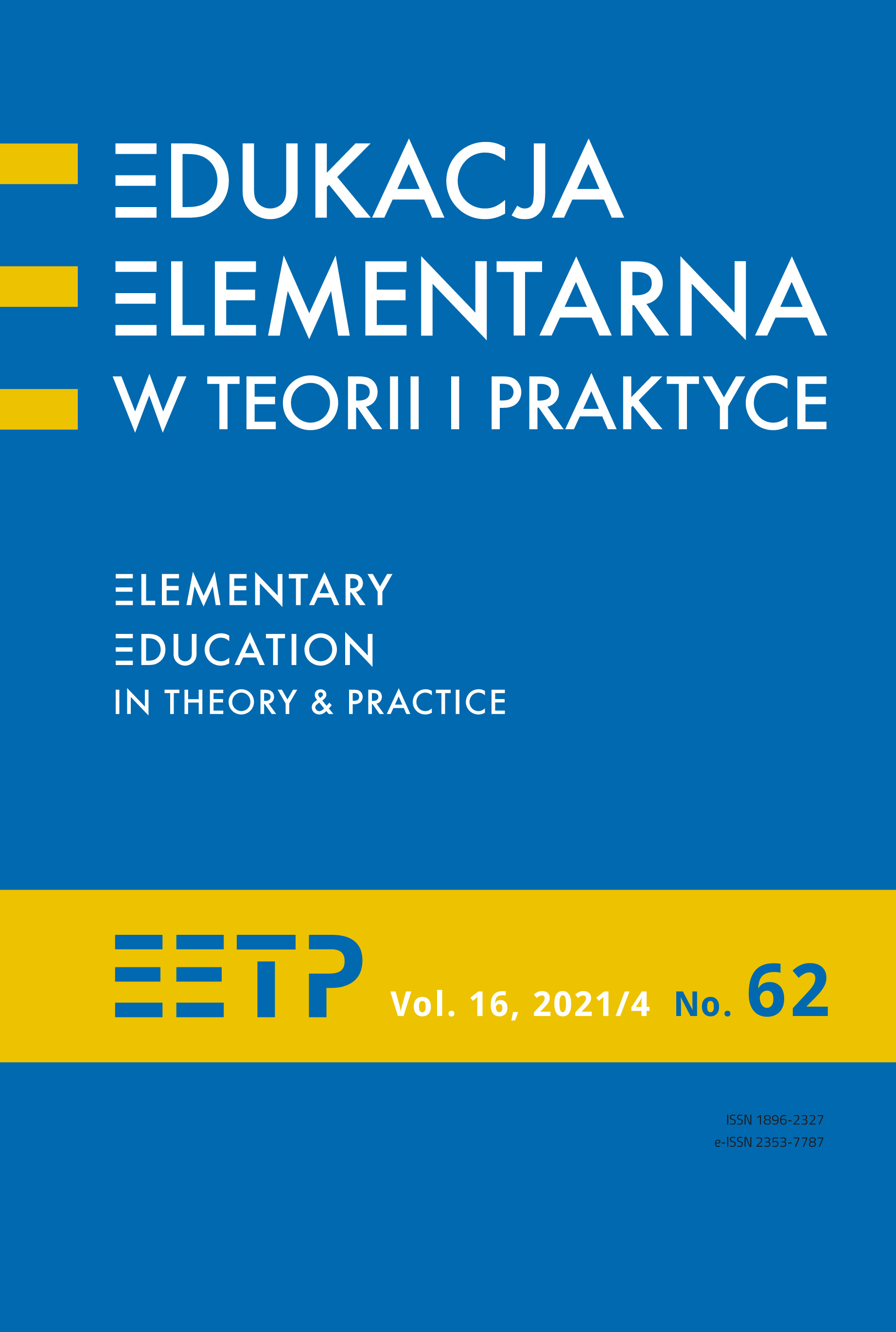“Significant others” in Media and the Upbringing of a Modern Child
Abstract
The aim of the article was to analyze the theoretical relationship between contemporary media personalities and the upbringing of a child. The considerations refer to the concepts of the "significant Other" and the authority, including the media authority. At the same time, it was emphasized that the concept of an authority is very much debatable today. The next part of the article describes difficulties associated with raising a child in a world immersed in the media. In order to achieve a certain balance, after analyzing the products, examples were given of media personalities that could play the role of a "significant Other" or a media authority that could be good for contemporary children.
References
Bąk A. (2015). Korzystanie z urządzeń mobilnych przez małe dzieci w Polsce. Wyniki badania ilościowego. Fundacja Dzieci Niczyje, http://www.mamatatatablet.pl/pliki/uploads/2015/11/Korzystanie_z_urzadzen_mobilnych_raport_final.pdf [dostęp: 30.08.2021].
Berger P. L., T. Luckman (1983). Społeczne tworzenie rzeczywistości. Warszawa: Państwowy Instytut Wydawniczy.
Godzic W. (2007). Znani z tego, że są znani. Celebryci w kulturze tabloidów. Warszawa: Wydawnictwa Akademickie I Profesjonalne.
Godzic W. (2004). Telewizja i jej gatunki po „Wielkim Bracie”. Kraków: Wydawnictwo Universitas.
Iłowiecki M. (2012). Krzywe zwierciadło. O manipulacji w mediach. Lublin: Wydawnictwo Archidiecezji Lubelskiej Gaudium
Iwanicka A. (2016). Świat pod palcami. Dzieci w świecie nowych mediów, [w:] N. Walter (red.), Zanurzeni w mediach. Konteksty edukacji medialnej, Seria Psychologia i Pedagogika, Poznań: Wydawnictwo Naukowe UAM, s. 77 88.
Jas M. (2020). Patostreaming – ciemna strona internetu. Analiza zjawiska na wybranych przykładach, „Media Biznes Kultura”, 1(8), s. 169 180.
Morbitzer J. (2014). O wychowaniu w świecie nowych mediów – zarys problematyki, „Labor et Educatio”, nr 2, s. 119 143.
Olechnicki K., P. Załęcki (1997). Słownik socjologiczny. Toruń: Wydawnictwo Graffiti BC.
Piechna, J. (2019). Szkodliwe treści w Internecie. Nie akceptuję, reaguję! Poradnik dla rodziców. Warszawa: NASK.
Piórkowski P. (2016). Autorytety. Idole, pozory, celebryci i eksperci. Stare Miasto: Wydawnictwo Witanet.
Stasiak P. (2012). Jak wychować dzieci (w sieci). „Polityka”, nr 22(2860).
Szacka B. (2003). Wprowadzenie do socjologii. Warszawa: Oficyna Naukowa.
Szymański M. (2013). Socjologia edukacji. Kraków: Oficyna Wydawnicza IMPULS.
Wadsworth B. J. (1998). Teoria Piageta. Poznawczy i emocjonalny rozwój dziecka. Warszawa: Wydawnictwo Szkolne i Pedagogiczne.
Więczkowska M. (2012). Co wciąga Twoje dziecko?. Kraków: Wydawnictwo M.
Walter N., Pyżalski J., Iwanicka A., Kąkolewicz M., Michniuk A., Barwicka A., Sikorska J. (2020). Media cyfrowe a edukacja dziecka [w:] Krauze-Sikorska H., Klichowski M. (red.), Pedagogika dziecka. Poznań: Wydawnictwo Naukowe UAM. DOI: 10.14746/amup.9788323236948.
Walter N. (red.). (2016). Zanurzeni w mediach. Konteksty edukacji medialnej. Poznań: Wydawnictwo Naukowe Uniwersytetu im. Adama Mickiewicza w Poznaniu.
Witkowski L. (2011). Historie autorytetu wobec kultury i edukacji. Kraków: Oficyna Wydawnicza „Impuls”.
Blippi Educational Videos for Kids. https://blippi.com/pages/who-is-blippi-stevin-john-actor [dostęp: 22.08.2021].
Blippi Educational Videos for Kids: Learn Shapes for Kids with Blippi | The Shapes Song https://www.youtube.com/watch?v=teif6M9FjHE&list=PLzgk_uTg08P-88_G_mpQcDIqB6Xeeg_wl&index=6 [dostęp: 16.10.2021].
Blippi Educational Videos for Kids: Blippi Explores Fire Trucks for Children | Blippi Fire Truck Song (https://www.youtube.com/watch?v=CjbC9wAErts [dostęp: 16.10.2021].
Blippi Educational Videos for Kids: Blippi Plays Basketball With Andre Drummond! | Fun and Educational Videos For Kids (https://www.youtube.com/watch?v=AhbW4Dc07HE [16.10.2021]).
Ciocia Ania filmy edukacyjne dla dzieci. https://www.youtube.com/channel/UCizr-TZu9qJfvaMfHREDntw,[dostęp: 30.08.2021].
Rogala A. (2018). Duże sukcesy małej Neli, https://www.pb.pl/duze-sukcesy-malej-neli-940777[dostęp: 21.08.2021].
Nauka. To lubię Junior (2021). Czemu mydło myje? https://www.youtube.com/c/naukatolubiejunior/videos?view=0&sort=da&flow=grid, [dostęp: 22.08.2021].
Urząd Komunikacji Elektronicznej (2017). Badanie opinii publicznej w zakresie funkcjonowania rynku usług telekomunikacyjnych oraz preferencji konsumentów. Raport z badań rodziców i dzieci. https://uke.gov.pl/akt/badanie-konsumenckie-dzieci,53.html?fbclid=IwAR2e6ceZ4BOUNAEK-DKej43bO7u4G72FEqTrFr7foCbDMtcO4q_tN7N0ZR0 [dostęp: 30.09.2019].
Copyright (c) 2021 Elementary Education in Theory and Practice

This work is licensed under a Creative Commons Attribution-NoDerivatives 4.0 International License.
- When submitting a text, the author declares that he/she is the Author of the article (hereinafter referred to as the “Work”) and:
- he/she owns the exclusive and unlimited copyright to the Work,
- is entitled to dispose of the copyright to the Work.
Declares that it does not infringe any third party copyrights or legal rights.
Declares that there is no conflict of interest.
2. At the same time, the Author grants the Ignatianum University in Cracowa royalty-free, non-exclusive and territorially unlimited licence to use the Work in the following fields of exploitation:
- recording the Work in a hard copy, as well as on a digital or magnetic medium;
- reproduction of the Work using any technique, without limitation of the number of editions or copies;
- distribution of the Work and its copies on any medium, including marketing, sale, lending, and rental;
- introduction of the Work into a computer memory;
- disseminating the Work in information networks, including in the Internet;
- public performance, exhibition, display, reproduction, broadcasting and re-broadcasting, as well as making the Work available to the public in such a way that everyone can have access to it at a time and place of their own choosing;
- within the scope of dependent rights to the Work, including in particular the right to make necessary changes to the Work resulting from editorial and methodical development, as well as to translate the Work into foreign languages;
The licence is granted from the moment of the transfer of the Work to the Ignatianum University in Cracow. The Ignatianum University in Cracow is entitled to grant further sub-licences to the Work within the scope of the right granted. The licence is time-limited and it is granted for a period of 15 years, starting from the date of its granting.
Authors are permitted and encouraged to publish their text online (e.g. in their institution’s repository or on the institution’s website) before or during the submission process as this may lead to beneficial exchanges, as well as earlier and greater citation of the published text (See The Effect of Open Access). We recommend using any of the following portals of research associations:
- ResearchGate
- SSRN
- Academia.edu
- Selected Works
- Academic Search




